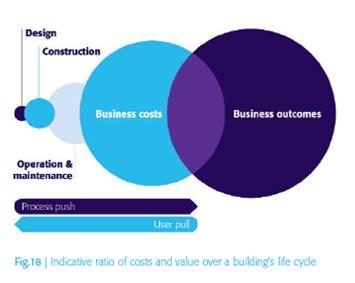Another step on the long march to improving construction
For those who still follow the path that leads to greater collaboration within the construction industry, last night’s launch of the Pinsent Masons-Constructing Excellence report Infrastructure in the New Era provided a welcome shot in the arm.
This report in many ways leads on from Andrew Wolstenholme’s report, Never Waste a Good Crisis. In his report Wolstenholme promotes the view (crudely stated by me) that you don’t build to build a building or piece of infrastructure, you build for a purpose.
From that follows the simple step to understanding that it is better to focus on building something that more effectively and efficiently matches the purpose rather than building something that is cost effective and efficient in its own right.
This thinking has been absorbed into the Government Construction Strategy. We now talk about business outcomes. These embrace not just the whole life cost of the building, but how the building might best match the business that goes on within it. And likewise for infrastructure.
 As the diagram I have lifted from the Wolstenholme report seeks to illustrate, building costs are dwarfed by the value of the business outcomes overall.
As the diagram I have lifted from the Wolstenholme report seeks to illustrate, building costs are dwarfed by the value of the business outcomes overall.
So shaving five and sixpence off the cost of a window which in turn leads to a fifty-fifty chance that £1,000 will be lost in downtime is pretty stupid economics.
However obvious this might be, embedding this thinking into the whole construction procurement process is an important step – and not an easy one.
The accepted thinking is that collaboration and collaborative working practices have a much better chance of delivering and sustaining this kind of thinking than an over-weaned attachment to competition that leads to procurement based on a perverse version of the Prisoner’s Dilemma.
And I tend to agree.
There are plenty of people getting great deals on buying construction at the moment. But they and we have yet to pick up the tab for suicide bidding. The damage from suicide bidding emerges month and years after the fact. And the damage can be long lasting.
In large part what lies behind this latest report is the desire to push forward lessons learned from successes in the infrastructure sector. And in its bid to do that it has pulled together the collective thoughts and insights of an impressive bunch of folk from across the industry.
Yes, its focus is infrastructure, but many if not most of the themes are universal for construction. And, frankly, many of the themes are familiar.
But the reports sets out plans for action and aims to be a manifesto around which those so minded can rally to progress the new thinking that has developed since the recession of the 1990s.
Naturally I could nit-pick. It is after all in my job description.
For instance, I would like to see more attention given to whether (and by how much) the built environment needs to be more flexible and able to accommodate potentially dramatic changes of use.
We cannot know the future with precision – okay a few clairvoyants may disagree. So we need to accept that the use of a building or piece of infrastructure may change or become redundant sooner than we expect.
The danger here is that we end up, paradoxically, equipping ourselves with buildings and infrastructure worse suited to their purpose, or we are forced to knock them down and start again.
So, if we strive too fervently to deliver buildings or infrastructures to maximise the business outcome as we see them now, will we make buildings and infrastructure too inflexible to meet the changing needs of the future?
These are points for discussion. And I am sure they are being discussed and as we move on they will be aired and debated more frequently.
But for me personally, one quote at the launch struck a particular chord. This may seem like an aside, but it isn’t. It is central.
It was delivered by Ian Reeves, chairman of Constructing Excellence in his summing up. The note I took reads back as: “Tier one contractors have got to learn that they have to treat other companies in the supply chain as they would like to be treated themselves.”